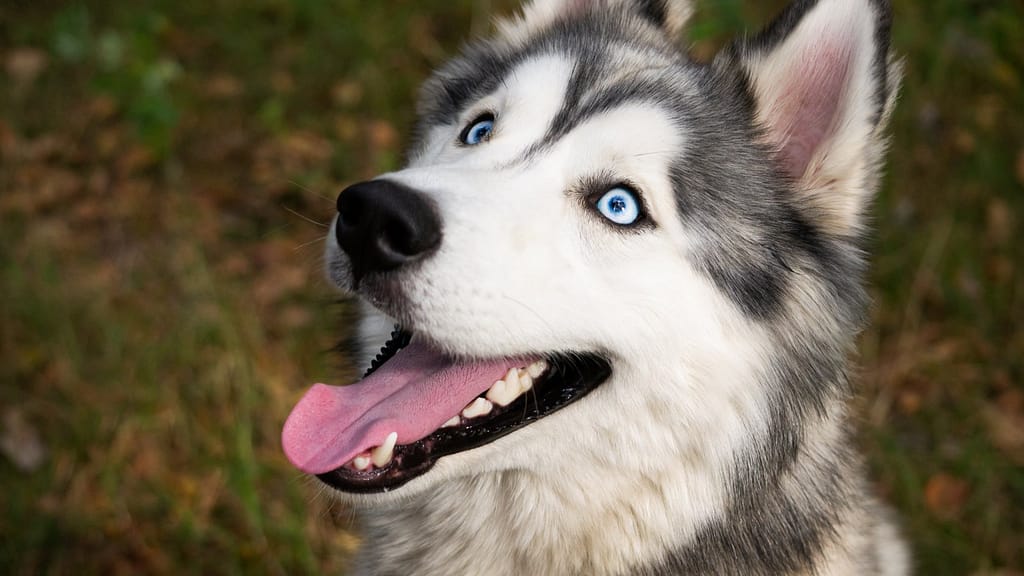A study looking at the brain size of different breeds relative to their skulls reveals how humans have altered the species through artificial selection.

According to a recent study, dogs with larger brains in relation to their bodies are not always smarter.
According to the study, which was published on Nov. 13 in the journal Biology Letters, working dogs may possess more sophisticated skills than other breeds, but they are arranged in a smaller area of the brain. This contrasts with the evolutionary history of wild animals, which shows that cognitive abilities tend to get more sophisticated as brain size increases in relation to body size.
According to Ana Balcarcel, the main author of the current study and an evolutionary biologist at the Montpellier Institute of Evolutionary Sciences in France, “Here we see the opposite of other groups [of species] where relative brain size is indicative of higher cognitive abilities.”
The study measured 1,682 adult dog skulls from 172 breeds kept at the Natural History Museum Bern in Switzerland in order to assess the proportions of brain size to body size. The dogs’ “relative endocranial volume,” or brain size in relation to body size, was determined by the researchers. The Canine Behavioral Assessment and Research Questionnaire, a standardized behavioral examination of canine breeds that gauges aggressiveness, attention-seeking behaviors, trainability, and other characteristics, was also used to collect scores for 14 behavioral features.
The lowest brains in relation to body size were found in “working” breeds, such as Siberian huskies that were trained to do intricate tasks to help people. The biggest relative brain size was found in “companion” breeds, such as Chihuahuas kept especially for pets.
Dogs that were easier to teach, usually working breeds like Siberian huskies, Great Pyrenees, and rottweilers, had smaller brains overall. In addition to performing human-assistance tasks including search and rescue, guiding, and policing, working breeds have been found to have superior executive function, which includes more behavioral control and short-term memory, compared to other dog breeds. According to Balcarcel, the interior brain tissue composition of larger dogs differs from that of smaller dogs.

The results of the current study were unexpected, according to Balcarcel, because prior research has indicated that larger brains are generally associated with better decision-making, more information-processing ability, and improved survival probabilities.
Dogs are not in their native habitat, which is the main distinction here, according to Balcarcel. “Artificial selection is responsible for them. a highly controlled selection process and evolution by humans.
Additionally, the study discovered that dog breeds with bigger relative brain sizes—mostly toy breeds, such as Yorkshire terriers, Pomeranians, and Chihuahuas—tended to exhibit greater attention-seeking behaviors, higher levels of fear and aggressiveness, and separation anxiety.
Since the primary purpose of these toy dogs’ breeding is to provide human companionship, love, and attention-seeking qualities are advantageous for breeding and propagation through artificial selection. Balcarcel hypothesized that these breeds could not have been as negatively impacted by fear and hostility as working dogs, who have been developed to be more trainable.
It appears that we have significantly modified the dogs’ brains in addition to their bodily sizes and dimensions; therefore, we can declare that we have truly transformed their brains,” Balcarcel added.
The team then intends to compare the structure and function of the brains of various breeds. Dog breed differences in the neocortex’s shape, which is a region of the brain that performs higher-level processes, may provide insight into the senses and abilities that are significant to particular dog breeds, according to Balcarcel.
Subscribe to our newsletter to stay informed.
Examining the structure of the dog’s brain may potentially provide insight into domestication and evolution. According to body size, domesticated dogs’ (Canis lupus familiaris) brains are around 20% smaller than those of wild gray wolves (Canis lupus); however, domesticated dogs are more specialized for complex social skills that allow them to work with humans, such as following human gaze and deciphering human pointing gestures.
The findings don’t necessarily transfer to your dog’s IQ, Balcarcel advised dog owners, regardless of the ratio of your dog’s brain to body size. According to Balcarcel, “Dogs have been bred for different cognitive abilities, so even if your dog is a little dimwitted, they are unique and specialized in their own way.”